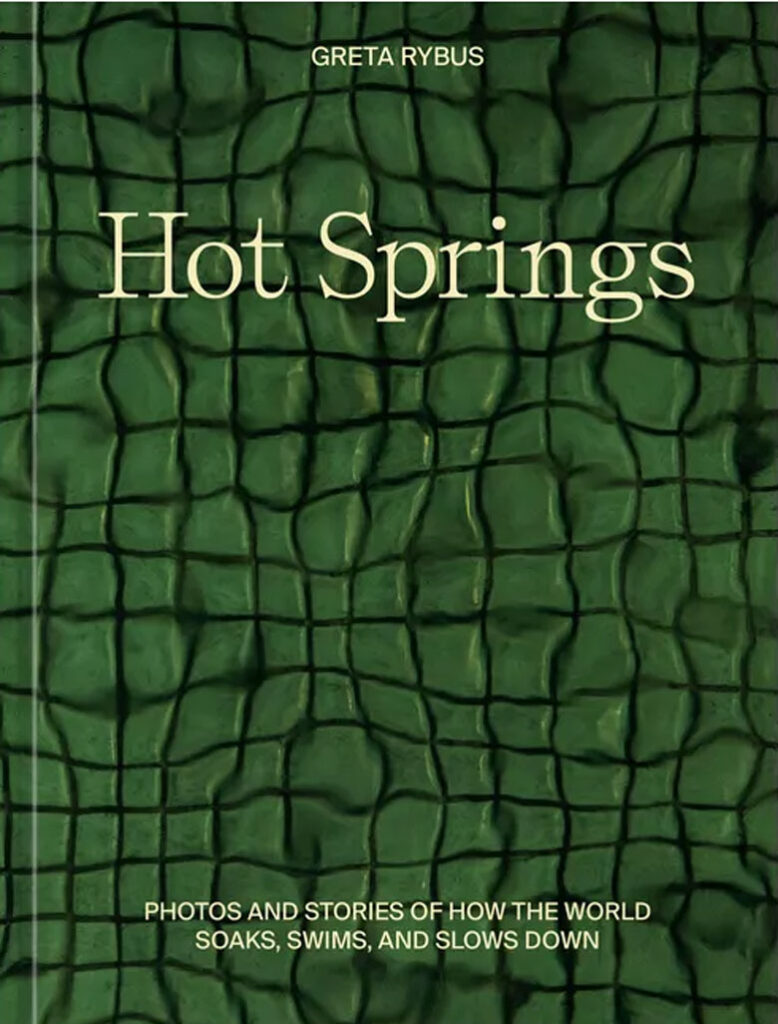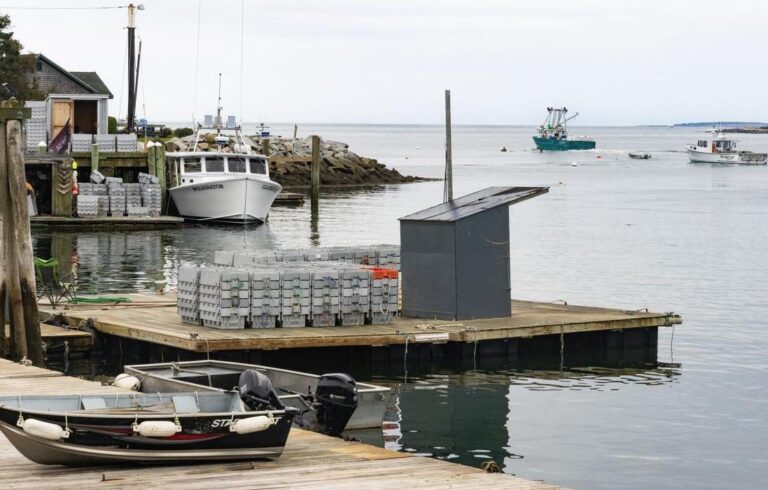Hot Springs: Photos and Stories of How the World Soaks, Swims, and Slows Down
By Greta Rybus (Ten Speed Press, 2024)
Greta Rybus, photographer and author of the new book Hot Springs, introduces readers to some stunning places that are dedicated to allowing people to enjoy the benefits of immersion in geothermal-heated water.
Twenty-three sites from around the world are featured here, and Rybus’s photographs show the settings as well as their patrons. Many locations suggest adventure is essential to entry. Some are enclosed in pools and buildings, but many are outdoors in their natural environs. Reaching some could require physical vigor, while others offer easier access and even spa-like ambience.
This beautiful book is not offered as a travel guide but rather Rybus’s very personal take on selected, favorite places with a sampling of what she saw and experienced there. Notably, to me at least, it is also not a coffee table book—one to leaf through and admire the pictures but not necessarily read the text. Rybus’s photographs lack captioning; the book practically demands to be read in its entirety.
My favorites include hot springs in Greenland, Mexico, Japan, Utah, and Switzerland…
Rybus, born in Idaho, traveled a lot as a child with her parents, who taught in international schools. The family enjoyed hot springs wherever they could.
She attended college at the University of Montana, studying photojournalism and cultural anthropology. Rybus describes herself as specializing “in stories about human connections to the natural world.”
Currently, Portland here in Maine is home. Yes, there are no hot springs in Portland; in an interview included on her website, she recommends several area saunas for the intense heat experience.
Her website (gretarybus.com) includes a photo-essay worth checking out about the tradition of keeping sheep on Big and Little Nash sslands (off the coast of Addison), and the Wakeman family who now care for them.
As fabulous as the book’s pictures are—my favorites include hot springs in Greenland, Mexico, Japan, Utah, and Switzerland—what I like even more is what she writes about the role of hot springs in their unique cultural and historical contexts.
“Etiquette and ethics” are suggested for those who visit the springs to ensure a safe, respectful experience and an appreciation of the care these special places need with gratitude for those who help provide that maintenance.
Often, hot springs are a spiritual as well as curative resource. Here’s Rybus in her introduction:
“This book is an exploration of hot springs and the various, spectacular ways this geological marvel can express itself with the collaboration of humans. Some look like palaces, others like a hole in the ground. Some feel like a party, others like a prayer. But every hot spring has the solace of heat, warm water that holds you and forces you to be present. Every hot spring is said to have healing properties, to be filled with elements dragged from inside the planet. These gathering places form odd communities, giving us a sense of belonging to each other and the Earth.”
Although Rybus’s book includes “swimming” in its subtitle, truly these places are not for exercise but to sit or recline and soak, to completely relax, perhaps in quiet conversation or more likely, a meditative state. How often do we let ourselves retreat momentarily from the demands of life and claim some serenity?
Watching the recent solar eclipse might have been notable for many of us—a break in routine, being outdoors connected to a primal phenomenon, engaged in an immersive experience. If you need more encouragement to build “time out” into your life, consider this motivation from Rybus:
“To soak in a hot spring is to be cradled and cared for by the dynamic forces of the planet… Soaking is a singular human experience: it promotes presence, relaxation, and reflection. It removes pretenses and distraction. It gives us the opportunity to be a citizen of nature, ritual, and community.”
Tina Cohen is a Massachusetts-based therapist who spends part of the year on Vinalhaven.





